12 Indoor Plants That Thrive in Low-Light Environments
Not all indoor plants need direct sunlight to thrive. Some plants are perfectly happy in low-light environments, making them ideal for spaces with limited natural light. These plants can add a touch of greenery to your home without requiring a lot of maintenance. If you are looking to brighten up a dim corner, these indoor plants will do the trick while staying healthy and vibrant.
This post may contain affiliate links, which helps keep this content free. Please read our disclosure for more info.
Snake Plant (Sansevieria)
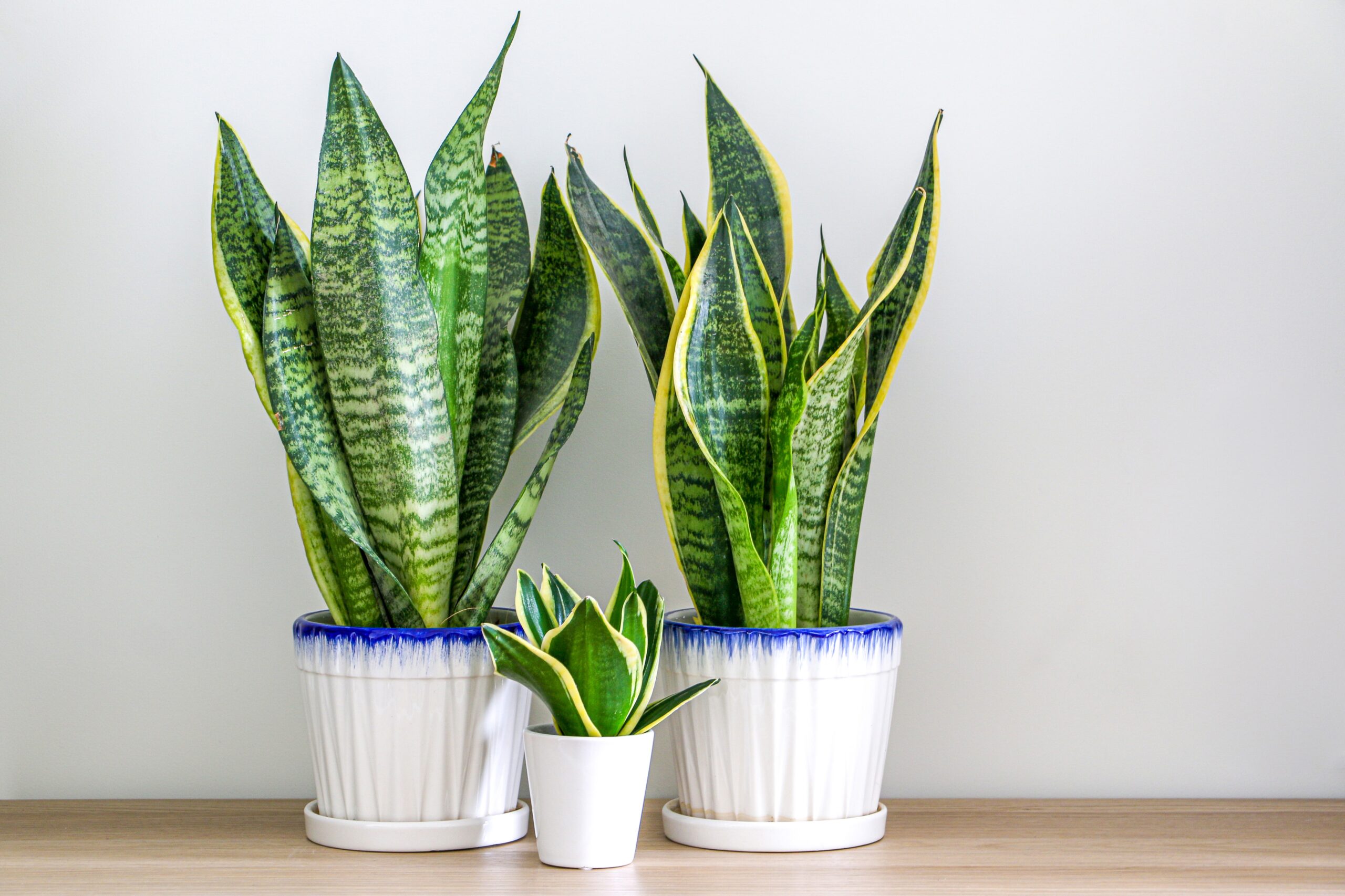
Snake plants are incredibly adaptable and can thrive in low-light conditions, making them perfect for areas with minimal sunlight. They are tolerant of neglect and can go weeks without water, as they store moisture in their thick, upright leaves. To care for a snake plant, water it only when the soil is dry, and avoid overwatering, as this can lead to root rot. This plant is also great for improving indoor air quality by removing toxins like formaldehyde.
Snake plants are known for their striking, vertical leaves and can grow in a variety of environments, from low light to indirect light. They prefer slightly dry soil and should be placed in well-draining pots. If you want your snake plant to flourish, make sure it is not in a location with excessive humidity. Its resilience and low maintenance requirements make it an excellent choice for beginners.
ZZ Plant (Zamioculcas zamiifolia)
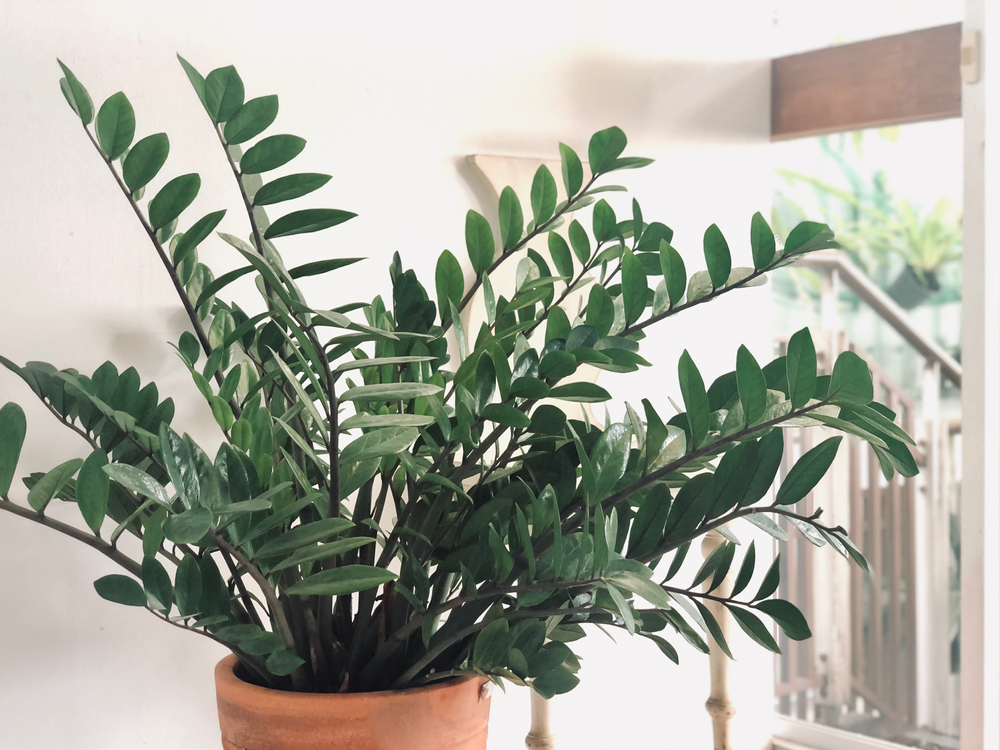
The ZZ plant is a popular choice for indoor spaces with little light. This plant can tolerate low-light conditions due to its waxy, thick leaves that store water, allowing it to thrive even in dim areas. It is best to water the ZZ plant only when the soil is completely dry, as it is highly susceptible to root rot if overwatered. It does well in indirect light but can also survive in darker corners of your home.
In terms of care, the ZZ plant requires very little attention, making it ideal for busy or forgetful plant owners. It prefers a well-draining pot and does not need frequent repotting. The ZZ plant is slow-growing, so you will not need to worry about trimming it often. Its glossy, deep green leaves add an elegant touch to any room.
Peace Lily (Spathiphyllum)
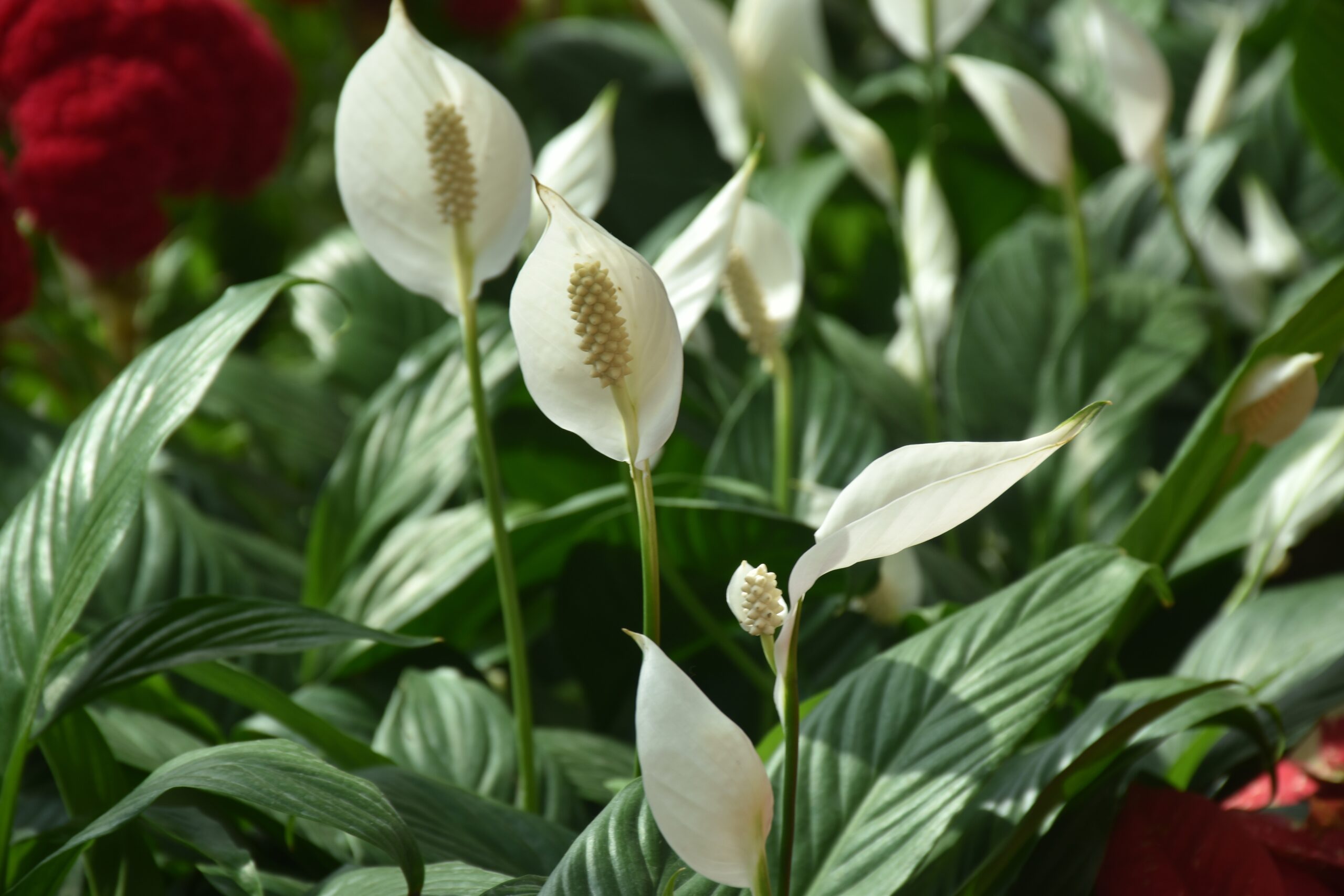
Peace lilies are one of the few flowering plants that thrive in low-light conditions. They do well in shaded areas and can bloom even without direct sunlight. To care for a peace lily, keep the soil consistently moist but not waterlogged, and make sure it is not sitting in standing water. Peace lilies also appreciate higher humidity, so occasional misting can be beneficial.
In low-light environments, peace lilies are relatively easy to maintain, but they may not bloom as frequently without some light. They are great at purifying indoor air and removing toxins, which adds an extra benefit to their aesthetic appeal. Peace lilies can adapt to various conditions, but they prefer a slightly warmer environment. Their striking white flowers can brighten up any room, making them a lovely addition to any home.
Pothos (Epipremnum aureum)
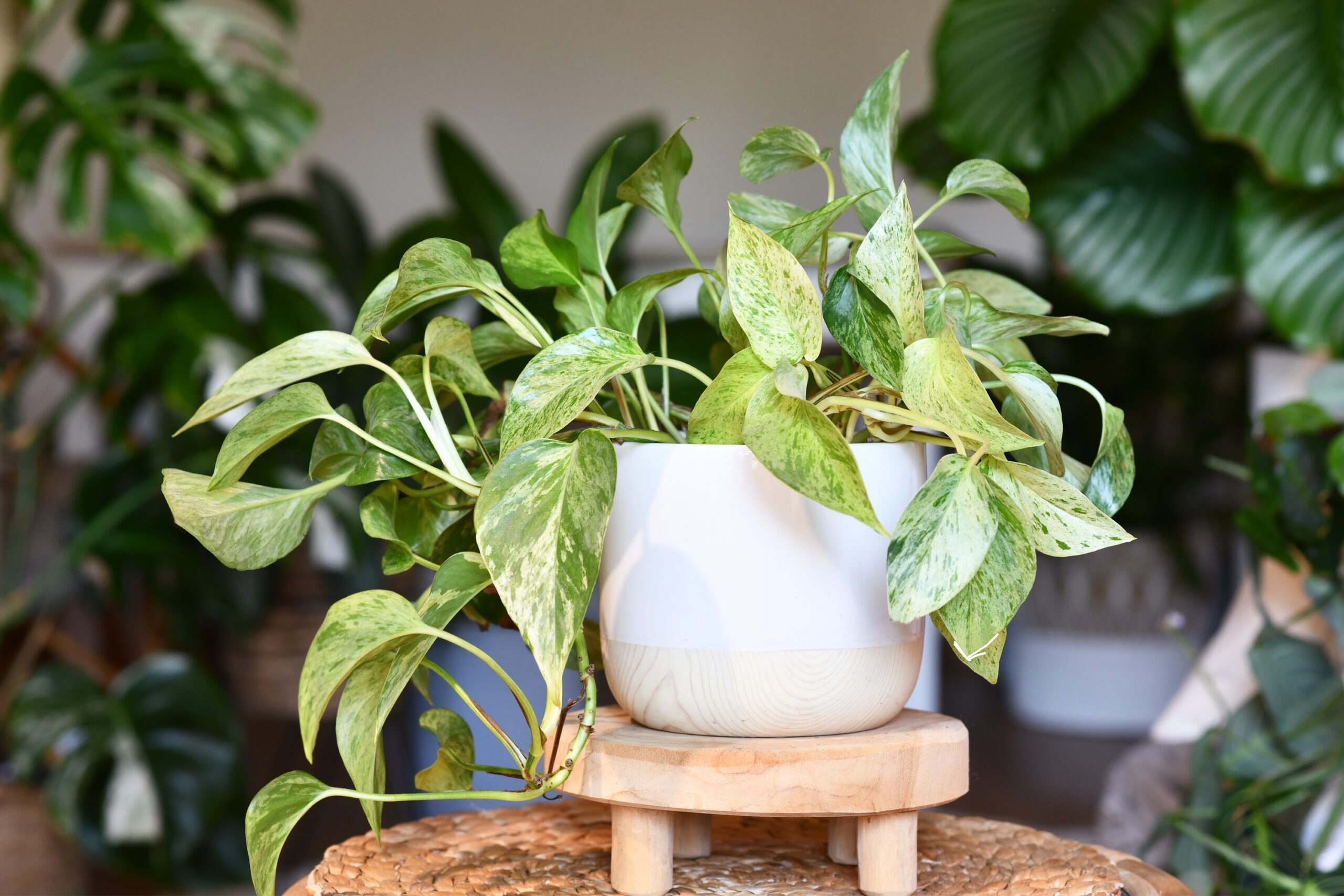
Pothos is an incredibly resilient plant that thrives in low-light environments, making it perfect for areas like offices or rooms with limited natural sunlight. This trailing vine can grow in various light conditions, including low light, and only needs occasional watering when the soil has dried out. Pothos is a fast-growing plant and can tolerate a range of indoor conditions, from low to bright indirect light.
To keep your pothos healthy, water it only when the top layer of soil feels dry, and ensure the plant is not sitting in stagnant water. It does well in a hanging basket or as a trailing plant from a shelf or table. Pothos is very forgiving and will continue to thrive even with minimal care, making it ideal for both beginners and busy individuals. Its heart-shaped leaves add a touch of greenery to any space, and it is also known for being easy to propagate.
Spider Plant (Chlorophytum comosum)
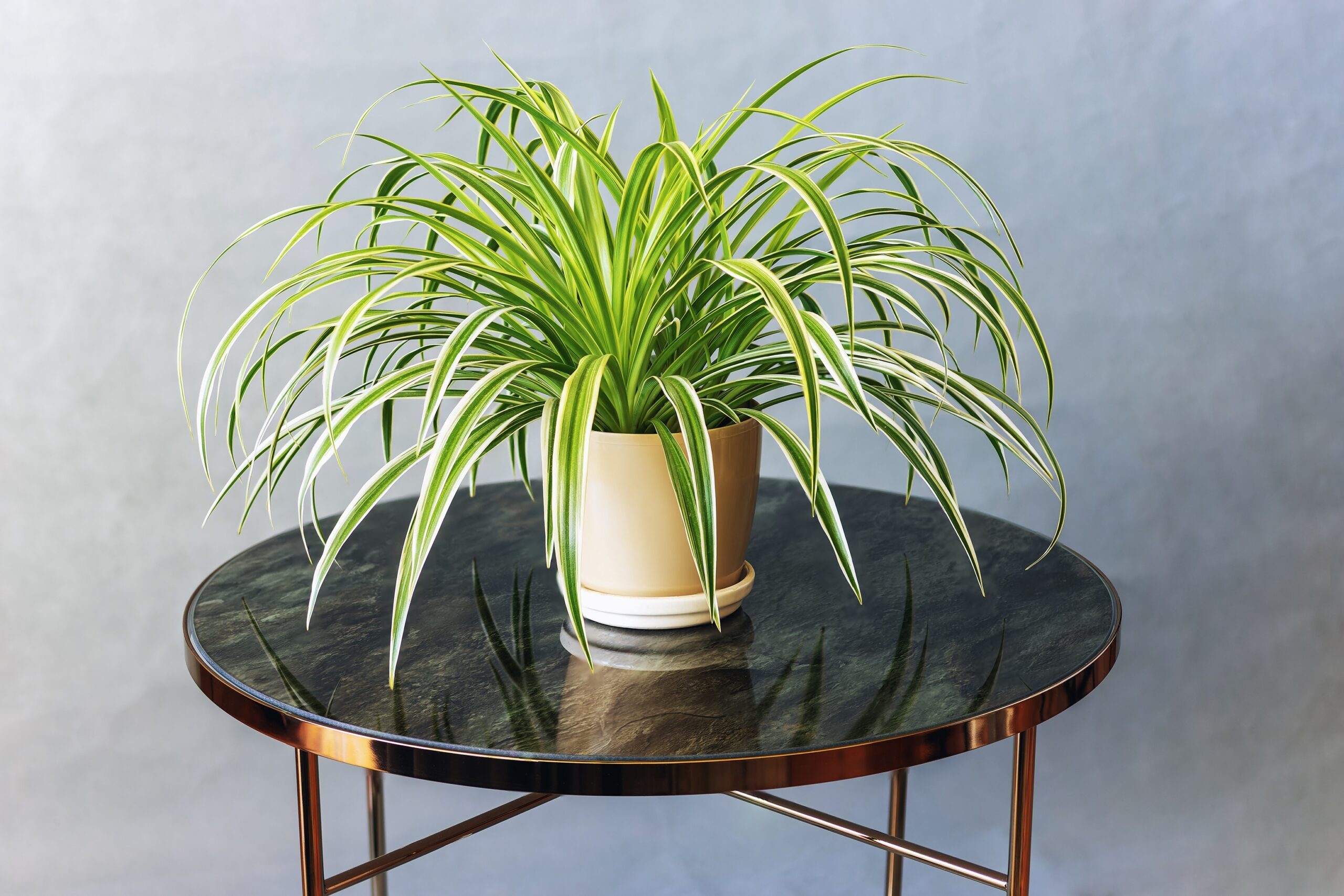
Spider plants are known for their ability to adapt to various lighting conditions, including low light. They thrive in indirect light but can also tolerate areas with little natural sunlight. Spider plants prefer moderate watering, and it is best to let the soil dry out between waterings. Overwatering can cause the roots to rot, so it is important to ensure the plant is not sitting in water.
In low-light conditions, spider plants are still able to grow well, though their growth may slow down. They can also tolerate some neglect, making them perfect for those who might forget to water occasionally. Spider plants are excellent at purifying the air and are safe for pets, making them a great choice for households with animals. Their arching leaves and small “babies” or offshoots make them a charming addition to any room.
Chinese Evergreen (Aglaonema)
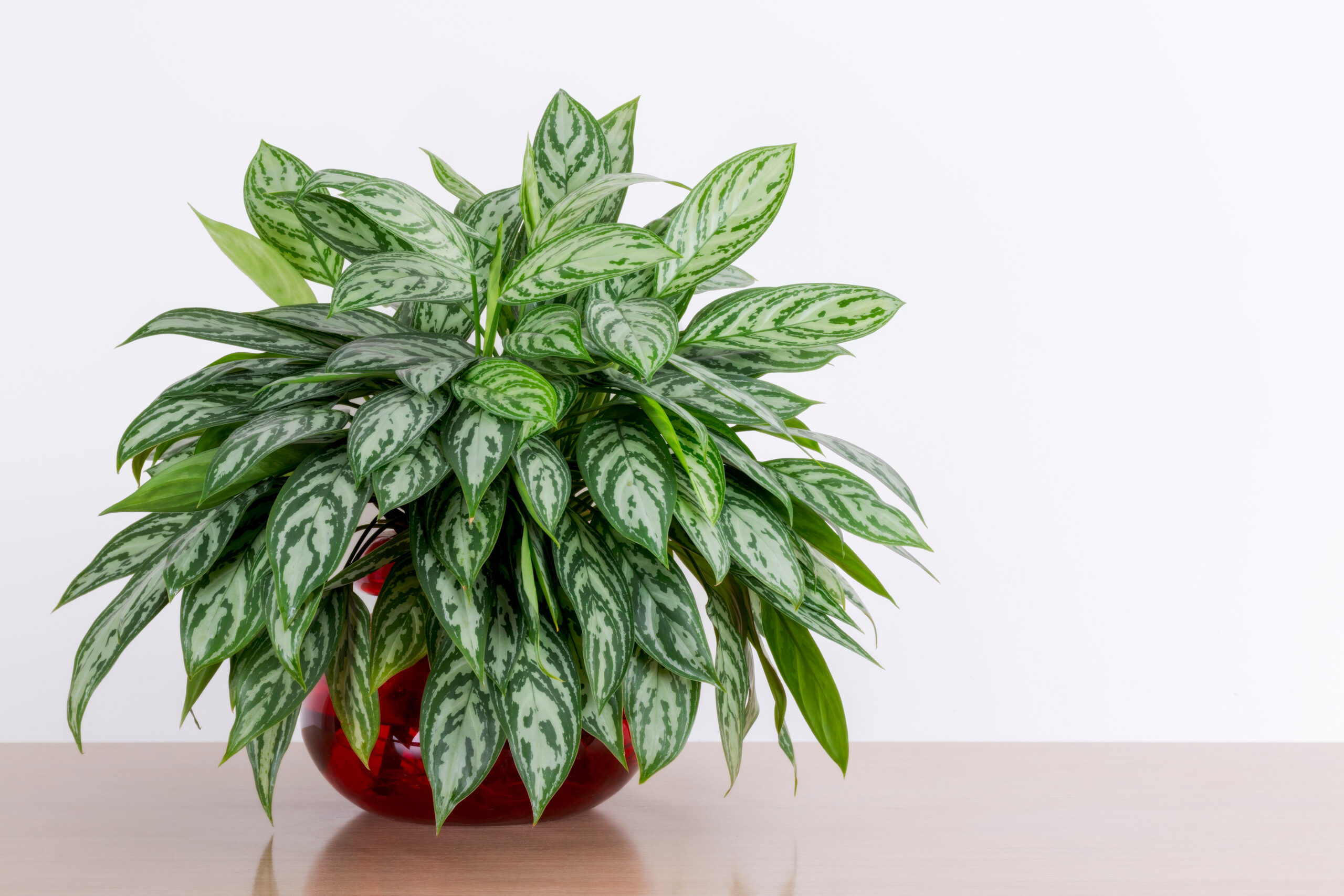
The Chinese evergreen is a perfect choice for a low-light environment due to its tolerance of shade. It can thrive in areas with very little natural light, making it a great option for offices, bathrooms, or darker corners of your home. To care for the Chinese evergreen, water it moderately, allowing the soil to dry out slightly between waterings. This plant can survive with minimal light, but it prefers indirect or filtered light.
Chinese evergreens are known for their striking, variegated leaves, which can range from deep green to silver or red. They are relatively easy to maintain and require little more than regular watering and occasional cleaning of their leaves. The plant is not very picky about humidity and can tolerate typical indoor conditions. Its low-maintenance nature makes it a wonderful addition to any indoor space, especially for those who may not have a green thumb.
Cast Iron Plant (Aspidistra elatior)
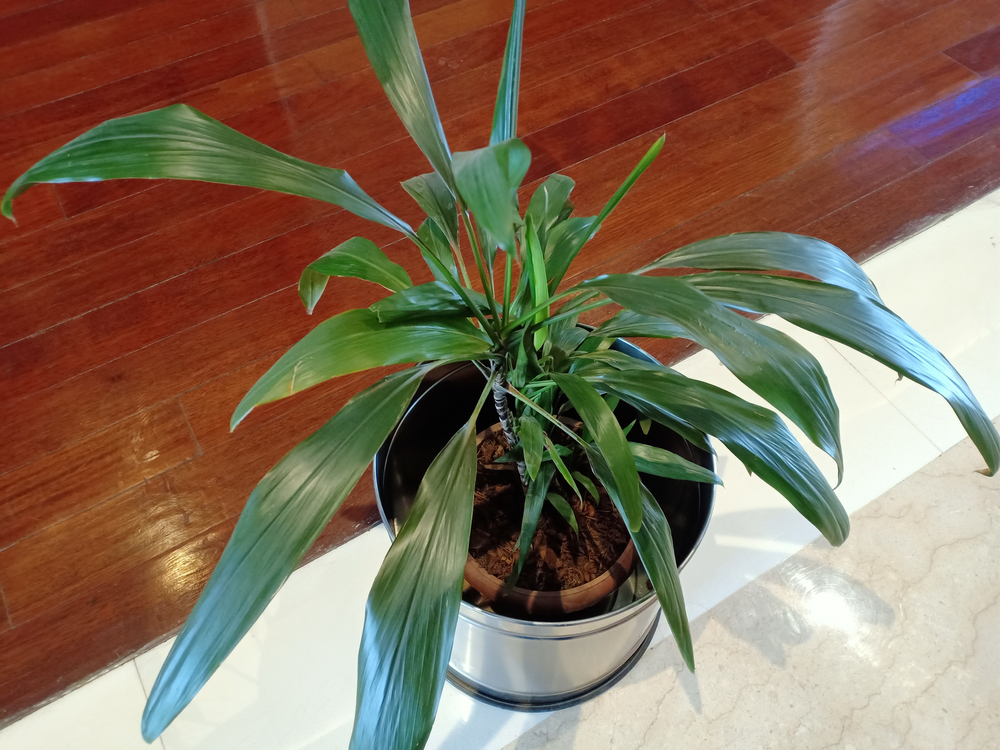
The cast iron plant lives up to its name, as it is incredibly resilient and can thrive in low-light conditions. This plant can tolerate almost any indoor condition, from low light to neglectful watering, and is perfect for homes with less natural sunlight. It requires minimal maintenance- just water it when the soil feels dry to the touch, and it will continue to thrive. The cast iron plant is known for its deep green, glossy leaves that add a touch of elegance to any room.
While it is adaptable to various conditions, the cast iron plant does best when placed in a location with indirect light. It is slow-growing and will not need frequent repotting, making it perfect for those who want a no-fuss plant. This plant is also great for improving indoor air quality, making it an excellent addition to living rooms or offices. Its robust nature and ease of care make it a top choice for anyone looking for a resilient, low-light plant.
English Ivy (Hedera helix)
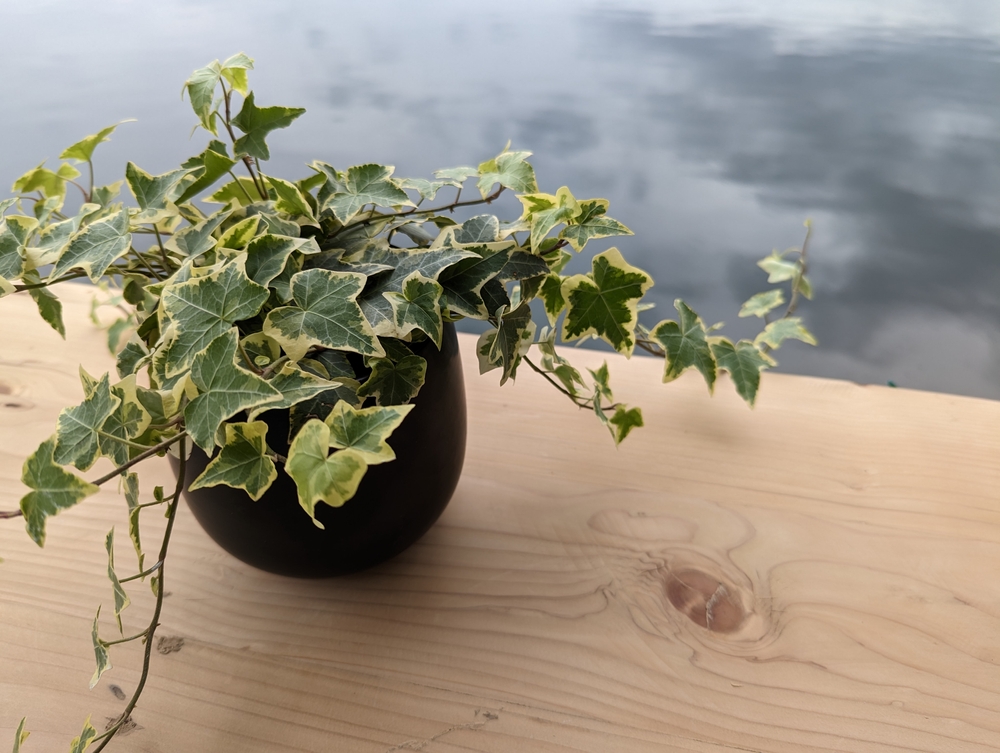
English ivy is a versatile plant that can thrive in low-light environments, making it an ideal option for shaded areas of your home. It can adapt to both bright and dim light but does especially well in low-light conditions. To care for English ivy, water it moderately, allowing the soil to dry out between waterings. It prefers cool temperatures and will do well in most indoor environments.
English ivy is a great plant for both beginners and experienced gardeners, as it is easy to care for and can be trained to grow along trellises, windowsills, or hanging baskets. It is also an excellent air purifier, removing toxins from indoor air. The plant’s trailing vines make it a beautiful addition to any home, adding a touch of nature wherever it is placed. English ivy’s ability to thrive in low light makes it ideal for dim corners or offices with minimal sunlight.
Philodendron
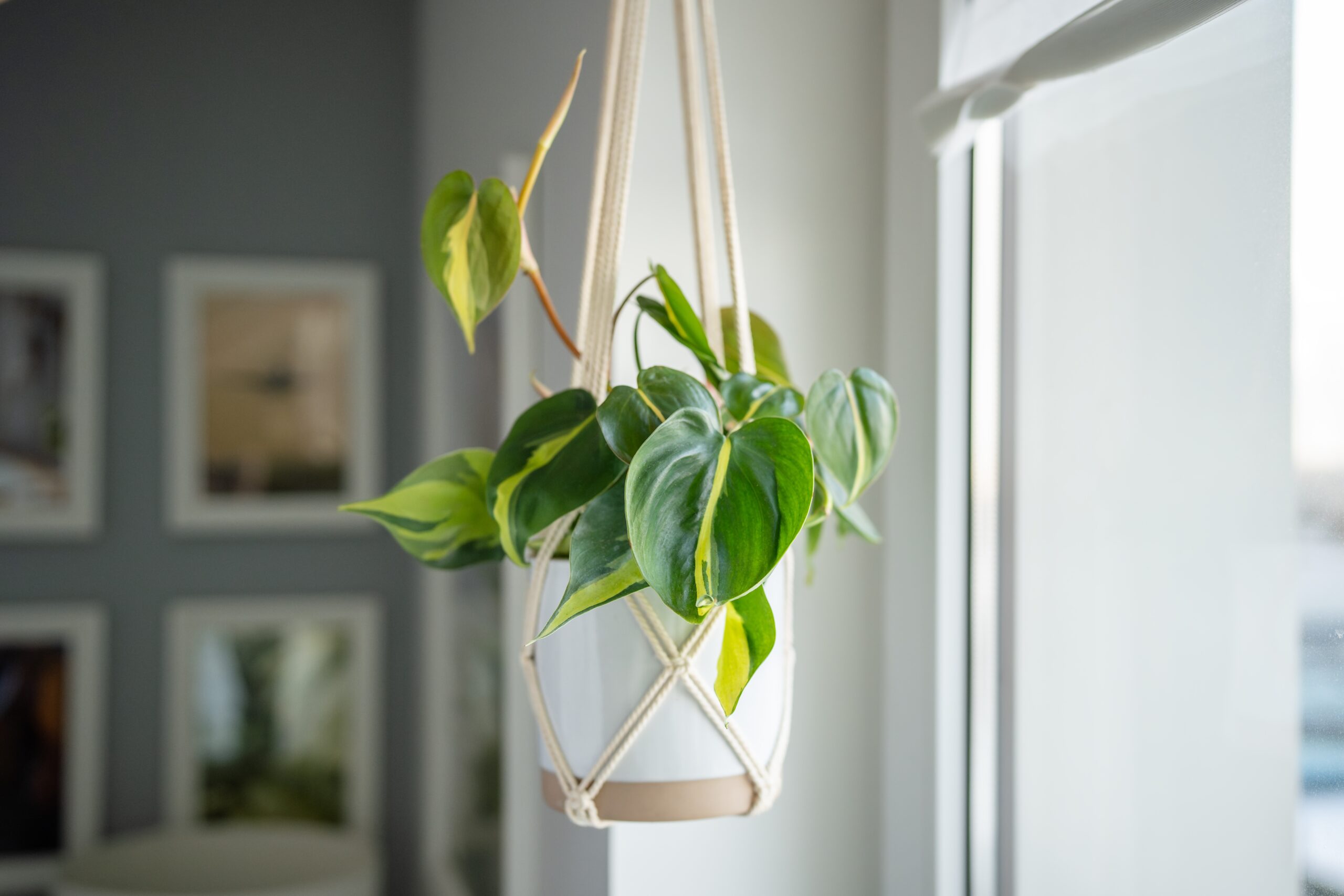
Philodendrons are popular low-light plants that can adapt well to various indoor conditions, including shaded spaces. They are easy to care for and can tolerate a wide range of light conditions, from low to medium light. Philodendrons prefer to be watered when the top layer of soil has dried out, but they can handle occasional neglect. These plants are perfect for hanging baskets or as trailing vines from a shelf.
Philodendrons have large, heart-shaped leaves that add a lush and vibrant touch to any room. They are great for purifying the air and are safe for pets, making them an excellent option for households with animals. Their ability to grow in low light and tolerate irregular watering makes them perfect for those with busy schedules. Whether you have a bright or dim room, a philodendron will thrive with minimal care and continue to grow year-round.
Dracaena
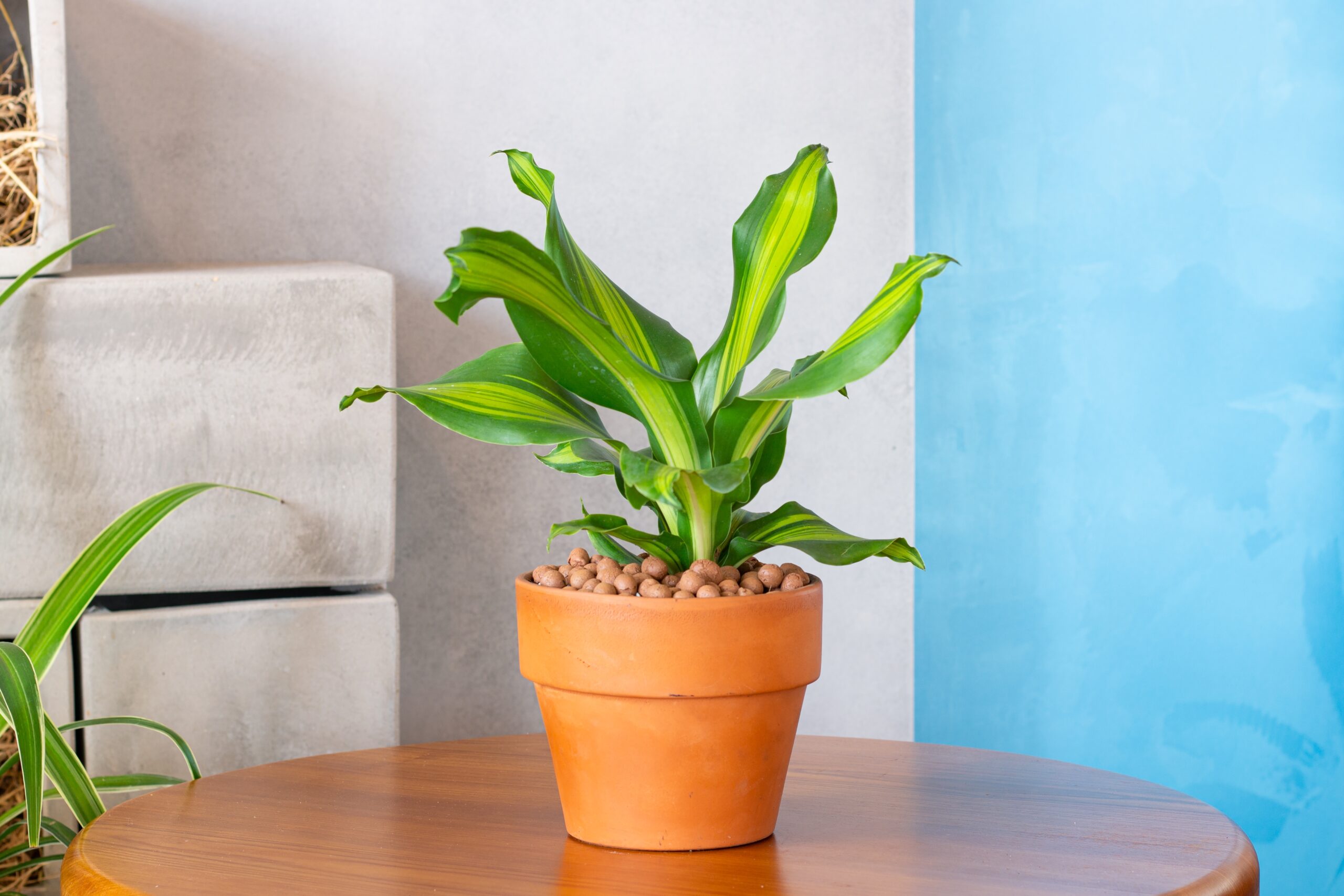
Dracaena is a versatile indoor plant that thrives in low-light environments, making it perfect for homes or offices with limited sunlight. This plant can grow well even in shaded spaces and requires very little maintenance. To care for a dracaena, water it when the soil has dried out, and avoid overwatering, which can cause root rot. It also prefers indirect light, making it ideal for low-light areas.
Dracaena is known for its striking, long leaves that come in a variety of colors and patterns, including green, red, and yellow. It grows slowly but steadily, adding beauty and elegance to any space. Dracaena plants are also known for their air-purifying properties, making them a great addition to rooms where air quality may be a concern. They are perfect for those looking for a low-maintenance plant that adds a tropical touch to their indoor space.
Bamboo Palm (Chamaedorea seifrizii)
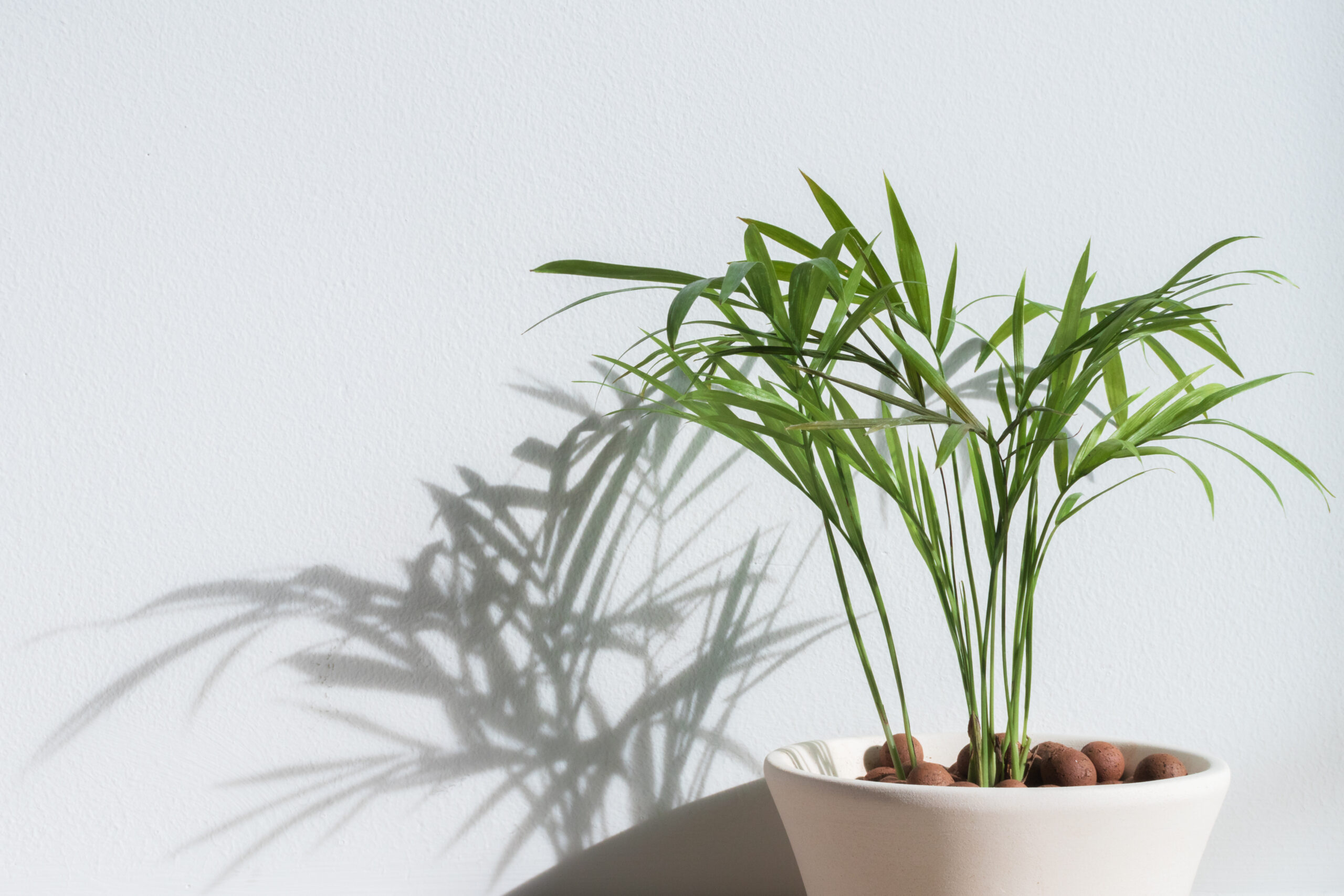
The bamboo palm is an excellent choice for low-light areas and is perfect for adding a touch of greenery to darker rooms. It thrives in indirect light and can tolerate low-light environments without losing its lush, vibrant appearance. Bamboo palms prefer to be watered when the top layer of soil feels dry, and they do not require much sunlight to grow. They are also known for their ability to improve indoor air quality by removing toxins like benzene and formaldehyde.
Bamboo palms are ideal for small to medium-sized spaces and can fit comfortably in corners or next to furniture. They are slow-growing and do not need frequent repotting, making them an easy-care plant for busy individuals. With its graceful, arching fronds, the bamboo palm adds a tropical vibe to any room. It is also non-toxic to pets, making it a safe option for households with animals.
Castor Bean Plant (Ricinus communis)
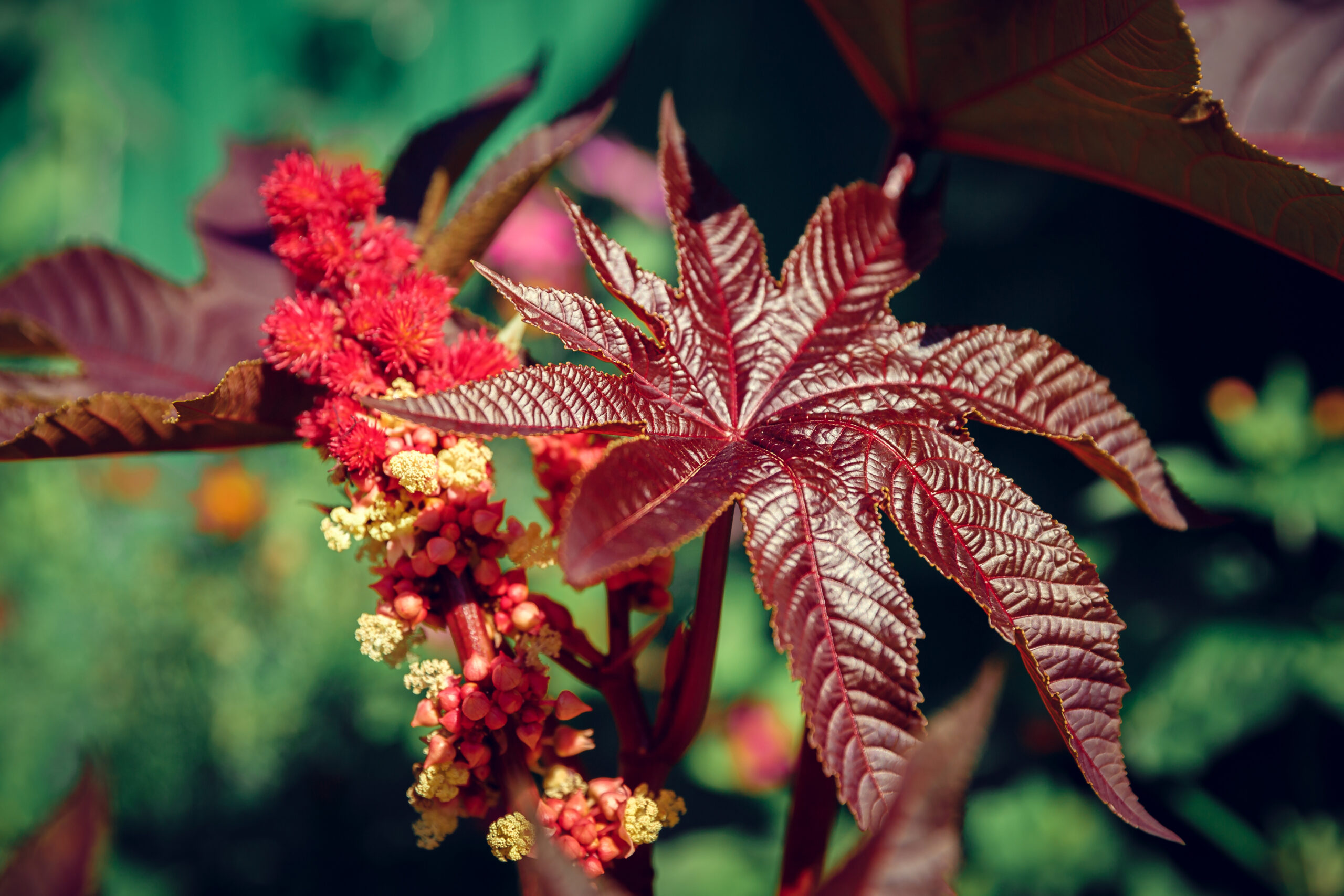
The castor bean plant is a striking addition to any indoor space, capable of thriving in low-light environments. It grows well in indirect light, although it can also handle some shade. To care for this plant, ensure that the soil is kept moist but not waterlogged, as overwatering can cause issues. The castor bean plant prefers warmer temperatures and does well in humid environments.
Despite being a low-light plant, the castor bean plant can grow quite large, so it is best to place it in a spacious room or corner. It has large, dramatic leaves that can add a bold touch to any room. However, it is important to note that the seeds of this plant are toxic, so it is essential to keep it away from children and pets. The castor bean plant can adapt to indoor environments with minimal sunlight, making it an easy addition to any home.
This article originally appeared on Avocadu.
